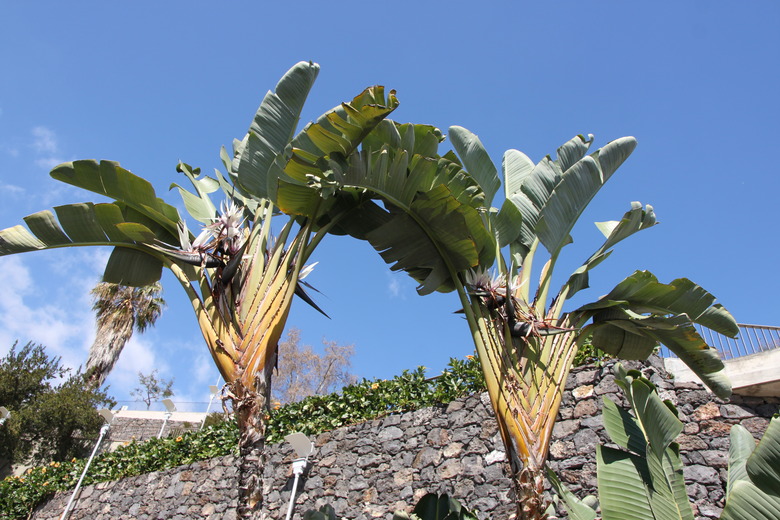How To Get Rid Of A Bird Of Paradise Plant
The spectacular bird of paradise presides over a flower garden, seeming to peer down at other plants with its regal, spiked head. While it's not considered invasive, it can grow quite large, forming a 3- to 5-foot clump or even larger for white-flowered varieties.
If your bird of paradise (Strelitzia reginae, USDA hardiness zones 10 to 12) plant has outgrown its place in the garden, you can dig it up and divide it into smaller plants that you can either give away or replant in another, more desirable garden location.
To get rid of a bird of paradise plant entirely, cut back the foliage and dig up the rhizome clump, taking care to remove all stray rhizomes and lateral roots.
About the Bird of Paradise
Native to South Africa, the giant bird of paradise—its evocative common name—was initially classified in the banana family. However, it's not a banana plant; it now has its own family, Strelitziaceae. It is also sometimes called a crane flower, likely due to its resemblance to the upright, graceful posture of the crane.
The bird of paradise flower provides a knockout punch in a garden. It appears on top of a thick, firm stalk, emerging from the canoe-shaped bird of paradise leaves. Usually, the flowers are the characteristic brilliant blue and orange, but there is a white bird of paradise (Strelitzia nicolai) that grows even larger, up to 15 to 30 feet wide.
Digging Up and Dividing Bird of Paradise Plants
The best time to dig up and divide bird of paradise plants is early spring before new growth appears. Water the soil and dig up the rhizome clump using a sharp knife to separate the clump into sections with four or five shoots each. Immediately replant the sections in the garden or a container.
If you don't want to replant or keep your bird of paradise, consider finding a gardening friend who might want it or check in with the local master gardeners' program. These plants are valuable and highly prized by many, and you will probably find a good home for it.
Bird of Paradise Plant Care
When situating a bird of paradise, choose a location with well-draining soil in full sun or partial shade. In full sun, the plant will grow somewhat smaller with smaller blooms and shorter stems. Space the plants at least 6 feet apart to give them room to produce their striking flowers; the majority of blooms appear on the outside of the clump.
Bird of paradise plants are susceptible to few diseases and pests, but they might be targeted by aphids, caterpillars, scales or snails.
Tip
Bird of paradise is susceptible to cold damage, so if your area regularly sees temperatures below 60°F, consider growing these plants in containers so you can either maintain them indoors year round or bring them inside when cold weather threatens.
Growing in Containers
When growing a bird of paradise plant indoors, choose a container not much larger than the rhizome clump, because this plant needs to be somewhat pot-bound to flower, reports Washington University. It can take four to five years for a new plant to produce blooms.
Select a location with bright light that equates to direct sunlight, ideally an east-or south-facing window. Fill a pot with drainage holes with humusy potting soil, and plant the rhizome a couple of inches deep. It will likely take about eight weeks to produce new roots.
Water well after planting, but allow the soil to dry out between subsequent waterings. Overwatering or underwatering can result in yellowing leaves, while poor drainage is conducive to root rot, so monitor the soil carefully to avoid these issues.
During the growing season, fertilize every two weeks with a houseplant liquid fertilizer, but stop fertilizing in the winter.

